National Geographic is celebrating its 125th anniversary with a special edition entirely dedicated to the power of photography.
The October issue features iconic shots from history, including Steve McCurry's 'The Afghan Girl'. The piercing eyes of the girl that graced the cover of National Geographic in 1985 became known as the 'Afghan Mona Lisa', read the story behind the photo here.
Steve McCurry also captured the stark silhouettes of camels against burning oil as they foraged for shrubs and water during the Gulf War in 1991.
Kuwait, 1991
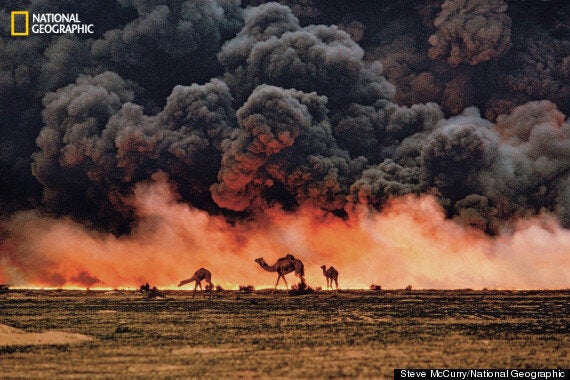
Under the black clouds of burning oil fields during the Gulf War, camels forage desperately for shrubs and water in southern Kuwait. Front-line photographs of regions ravaged by human strife can also illuminate war’s environmental cost.
Other released photos include a swimmer basking in a sunbeam spotlight, surrounded by stalactites in the Xkeken cenote, a natural well in the Yucatán thought by the Maya to lead to the underworld.
Dzitnup, Mexico, 2010
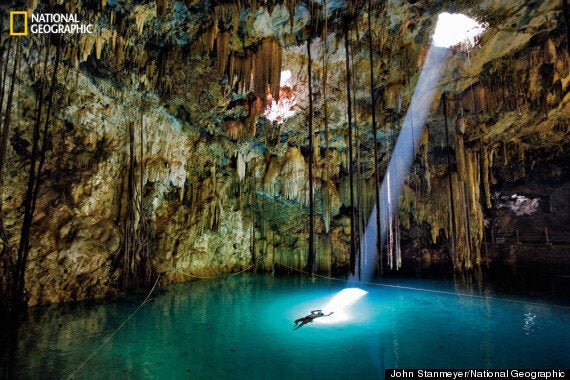
A single frame can transport us to one of our planet’s far-flung and beautiful places. In this one, stalactites and a sunbeam spotlight a swimmer in the Xkeken cenote, a natural well in the Yucatán thought by the Maya to lead to the underworld.
Photographer Robert Draper writes for the October issue: "Today photography has become a global cacophony of freeze-frames. Millions of pictures are uploaded every minute.
"Correspondingly, everyone is a subject, and knows it—any day now we will be adding the unguarded moment to the endangered species list.
"It’s on this hyper-egalitarian, quasi-Orwellian, all-too-camera-ready 'terra infirma' that National Geographic’s photographers continue to stand out."
Jökulsárlón Iceland, 2009
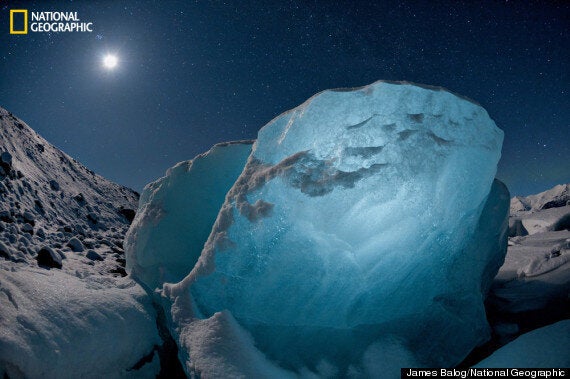
Destined to melt, an 800-pound chunk of ice glowed in the moonlight. It washed up in a lagoon created by a receding glacier, part of a worldwide shrinkage of glacial ice.
Afghanistan, 2010
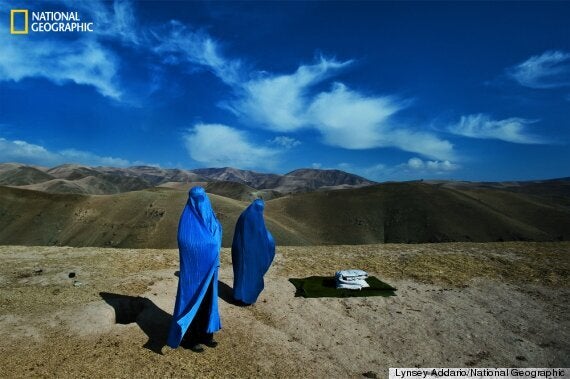
Noor Nisa, about 18, was pregnant, and her water had just broken. Her husband was determined to get her to the hospital, but his car broke down, and he went to find another vehicle. The photographer ended up taking Noor Nisa, her mother and her husband to the hospital, where she gave birth to a baby girl.
National Geographic also invite all photo enthusiasts to submit photos and participate in an digital assignment for the magazine, part of an online photosharing community, Your Shot.
Flick through more photos published in National Geographic, celebrating 125 years of photography:
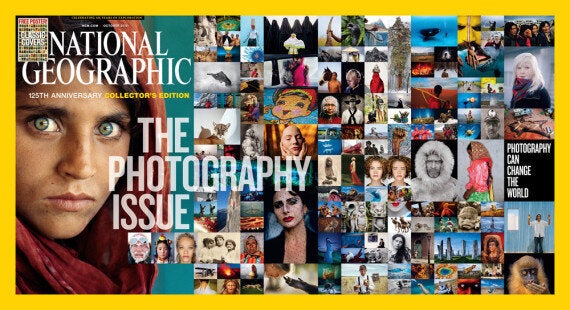
The October issue of National Geographic, dedicated to the power of photography
Flick through more historical National Geographic photographs:
Take a look at the winning photos from the recent 2012 National Geographic Photo Contest:
Milestones In National Geographic History
Jan. 13, 1888: Thirty-three founding members meet at the Cosmos Club, Washington, D.C., to create “a society for the increase and diffusion of geographic knowledge.”
October 1888: First issue of National Geographic magazine is sent to 200 charter members.
July 1890:National Geographic publishes its first photograph — a glimpse of Herald Island, Russia, taken from the deck of a ship.
1890-91: First National Geographic Society-sponsored expedition maps the Mount St. Elias region, Alaska and discovers Mount Logan, Canada’s highest peak. By 2012, the Society has funded more than 10,000 scientific research, conservation and exploration projects.
July 1906: Grosvenor publishes George Shiras III’s pioneering flash photographs of animals at night; two Society board members resign in disgust, claiming magazine is turning into a “picture book.”
1941: National Geographic Society opens its storehouse of photographs, maps and other cartographic data to President Roosevelt and the U.S. armed forces to aid war efforts. The following year, the Society makes a cabinet of National Geographic maps for Winston Churchill.
September 1959: Colour photographs begin to appear regularly on magazine cover.
1967: Dian Fossey begins long-term Society-funded study of mountain gorillas in Rwanda.
July 1969:Apollo 11 astronauts carry National Geographic Society flag to the moon.
April 1979: Mary Leakey reports discovery of 3.6 million-year-old footprints believed to be from the slow-walking ancestors of modern man, in the volcanic ash of a riverbed in Tanzania.
1984: Undersea archaeology pioneer George F. Bass, supported by the Society, discovers most extensive collection of Bronze Age trade goods ever found beneath the sea in a 3,400-year-old shipwreck off southern Turkey.
September 1985: Results of R.M.S. Titanic discovery announced at Society by Robert D. Ballard.
June 1996: Society launches its website: www.nationalgeographic.com.
September 1997: National Geographic enters cable television market launching in the United Kingdom, Scandinavia and Australia. By 2012 National Geographic Channels reach 440 million subscribers in 171 countries in 38 languages.
April 1998: National Geographic produces its first large-format film, “Mysteries of Egypt.”
March 2002: National Geographic announces it has located Sharbat Gula, the “Afghan Girl,” who appeared on the cover of the June 1985 issue of National Geographic magazine. Her photograph becomes the most recognized in the magazine’s history.
March 2012: Explorer-in-residence, James Cameron, becomes first person to dive solo to the Mariana Trench as part of DEEPSEA CHALLENGE, a joint scientific expedition by Cameron, National Geographic and Rolex to conduct deep-ocean research and exploration.


